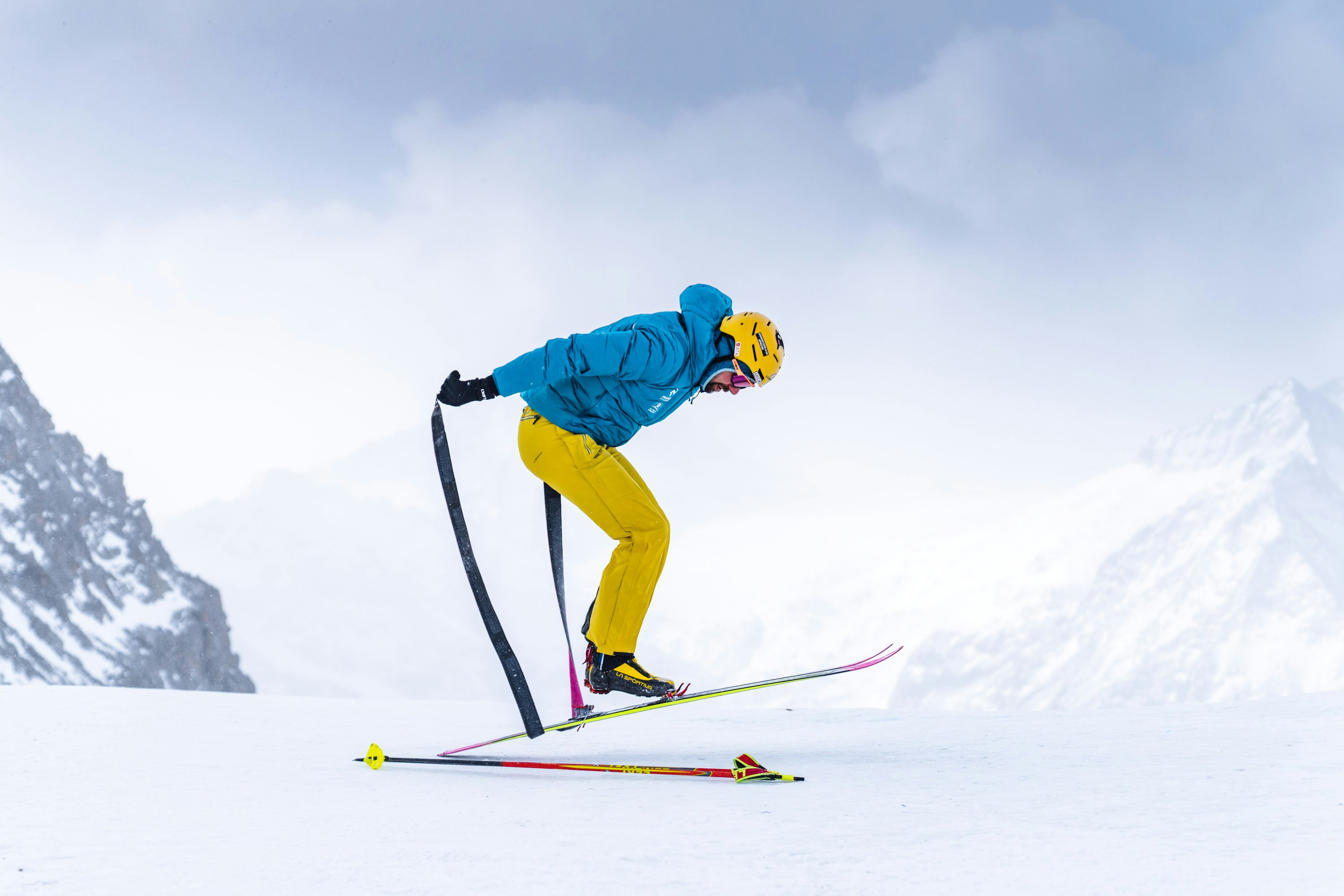Traditional, hot-melt adhesive is still the most common.
It offers high levels of tack (so it’s the best solution for narrow skis, is required in races, and is more problematic with fat skis, since it can be hard to remove at low temperatures) and can be washed and regenerated. It’s also easy to add more adhesive or replace it. You can fold your skins, although maybe not with fat skins, which can be hard to separate at cold temperatures. So we recommend using mesh or plastic skin savers when stowing your skins. As for Pomoca adhesive, this is a soft, super sticky hot-melt adhesive that, when warm, tends to stretch slightly. For racing, it’s best to break it in a bit on soft, waxed skis, so that it gets less wet and more waxy, making it faster to deal with when changing setup. It tends to leave a residue on dry, unwaxed ski bases. It’s not a problem for the skins, which maintain a uniform layer of adhesive after separating them from themselves, but the ski gets slower and picks up grit from the snow. The adhesive owes this characteristic to ski tourers and freeriders, who aren’t exactly known for keeping the bases of their skis clean and waxed. All the more reason to take good care of your equipment. And keep in mind the strength you’d need to separate such sticky skins from fat skis in the cold. You really need cheat sheets in winter from 85 millimeter widths on up.

Hybrids are acrylic based or a mix of traditional adhesive and gel. The goal of hybrid adhesives is to reduce the strong tack of hot-melt adhesives on wider skis, which can be challenging in the cold. Generally, it’s fine to fold your skins, but it’s always best to follow manufacturer recommendations and to regenerate the adhesive using specific cleaning products. Less aggressive adhesives also tend to pick up less debris. Gels create a thick, soft layer on the skin that essentially stick by way of the same effect as a suction cup. They collect less debris and can be cleaned, which restores their tack. Gel adhesives are designed to be easier to remove from fat skis, but require a clean, smooth surface, a wide contact area, and no extreme cold.

The market wants hybrids
Where’s the market headed? Towards mo-mix skins for one. These are the most common skins because they last longer and provide a good combination of grip and glide, making them versatile skins for ski touring, freeriding and even lightweight applications. The racing world uses mohair exclusively, as do many expert ski mountaineers, whereas nylon is more of an entry-level choice and not very trendy. As for adhesives, hot-melt stickum is still very popular, although hybrids seem to have matured and gotten much more reliable, making them a valid choice, as well, especially for fat skis. Gels, on the other hand, are not very common.
Share this article

